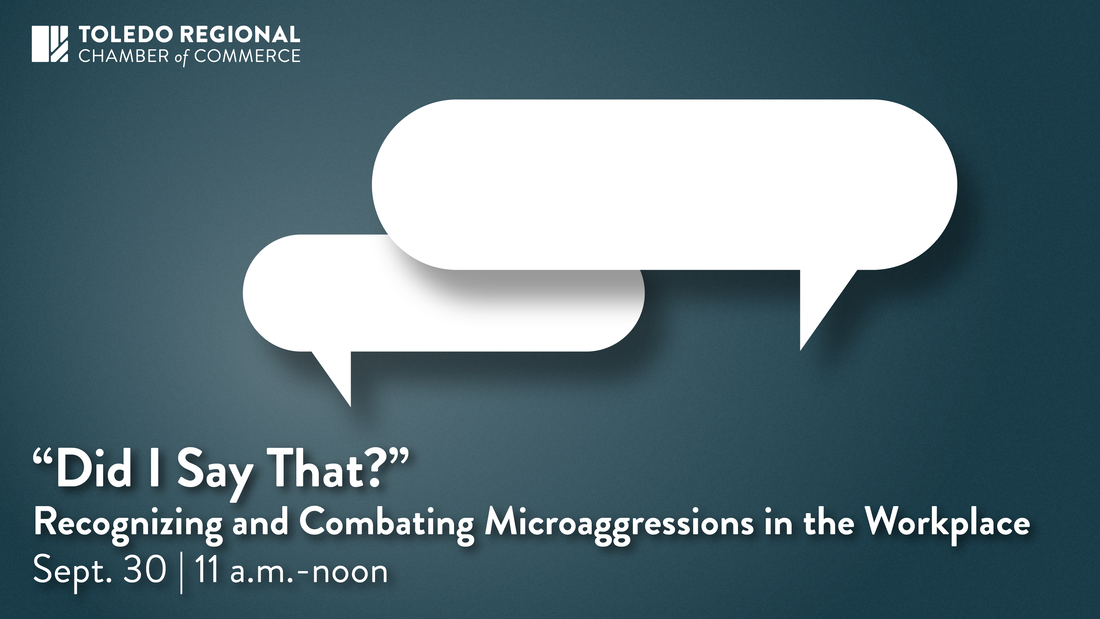“Microaggressions are the everyday verbal, nonverbal, and environmental slights, snubs, or insults, whether intentional or unintentional, which communicate hostile, derogatory, or negative messages to target persons based solely upon their marginalized group membership.” – Derald Wing Sue, Ph.D., Psychology Today
Eason highlighted the three types of microaggressions: explicit derogations and purposeful discriminatory actions, such as outing a person in the LGBT community without their consent, sexual harassment, catcalling and slurs; microinsults, which are behavioral or verbal remarks that convey rudeness or insensitivity that are not intentional but due to underlying biases; and microinvalidation, which are verbal comments that invalidate the thoughts, feelings or reality of someone else.
Examples of microaggressions in the workplace come in many forms, but Eason gives examples such as telling a person of color they are “so articulate” or “well-spoken,” telling a person of a different background that their name is hard to pronounce, or labeling a female coworker pushy or bossy but a similar male coworker as strong. Oftentimes, microaggressions are labeled as jokes from the aggressor, but to the victim, it creates a hostile work environment and ostracizes them.
Eason says some common effects of microaggressions are lower productivity, isolation of the victim, and even mental health issues like anxiety, depression and sleep difficulties. However, the victim is often plagued with an internal dilemma; “Did she just say what I think she said?”
Because of this internal dilemma, Eason says, many victims of microaggressions choose not to speak up or believe that by calling out their aggressor, they might make the situation worse for themselves. This internal dilemma can cause the victim to experience imposter syndrome and stereotype threat, which is the fear of validating a stereotype about people in the victim’s identity group.
But it’s not just the victim’s job to speak up about microaggressions and feelings of isolation in the workplace; in order to create a wholly inclusive, open and welcoming work culture, everyone must buy in.
“It’s your job to create an inclusive work environment,” says Eason.
Eason says, as a bystander, we must do a few things including to intervene, give the power back to the victim by inviting them to speak, and by approaching the victim to tell them you noticed the behavior and that you know it’s unacceptable.
If you’re the target of a microaggression, however, there are a few things you can do to respond in a way that’s professional, but still lets the aggressor know that what they said was wrong. Eason recommends asking for an explanation of the joke or comment, using humor to defuse the situation, or using non-verbal responses like looking shocked, confused or disappointed – all of these methods can be useful if you find yourself experiencing a microaggression.
Eason followed up with how to respond if you yourself are told you’ve expressed a microaggression. In these cases, Eason says, we should resist the urge to defend ourselves and instead acknowledge that our actions have hurt another person, thank the person for taking the time to educate you and to not expect anything in return such as the victim telling you, “It’s not a big deal,” or, “It’s OK.” Finally, Eason recommends we do our own research and try harder next time so it doesn’t happen again.
However, Eason reminded attendees that microaggressions are often not intentional, and used a quote by the president of Clinical Psychology of Ethnic Minorities Section of APA’s Div. 12 and psychologist at Cambridge Health Alliance/Harvard Medical School: “Committing a microaggression is not indicative that we’re bad people. It’s more indicative of a society where the dominant world view tends to be Eurocentric, masculine and heterosexual.”
You can view a recording of “Did I Say That?” Recognizing and Combating Microaggressions in the Workplace by visiting our Webinars page and scrolling down to Past Webinars. There, you’ll also find Eason’s presentation deck, handout and more.
Interested in learning more about the Toledo Regional Chamber of Commerce’s events, programs and initiatives? Visit our events calendar and register for our upcoming events.


 RSS Feed
RSS Feed
